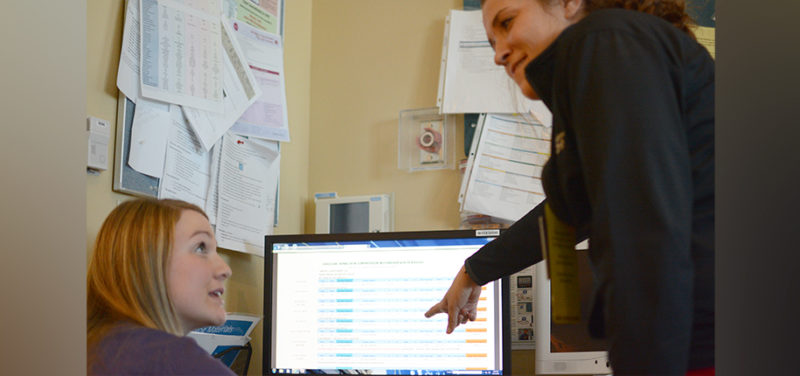
For many years, MRI department technologists have been dependent on cumbersome protocol binders in each control room to scan the correct sequences, set up the correct parameters, and follow proper guidelines.
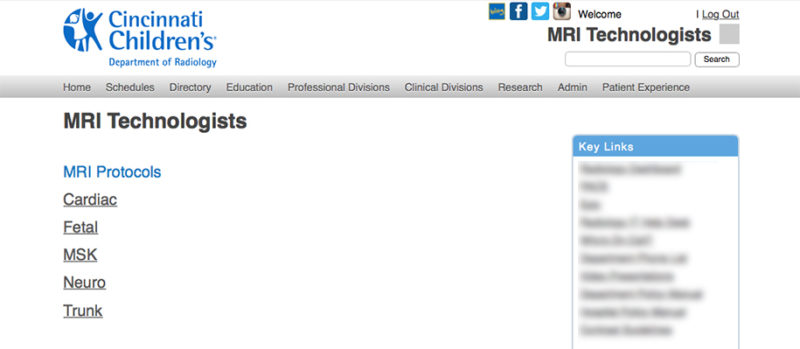 Image: MRI protocols on the Cincinnati Children’s Radiology website.
Image: MRI protocols on the Cincinnati Children’s Radiology website.
Recently, we have modernized, allowing these same protocols and guidelines to be located, updated and archived in one digitalized location: the radiology website. There are many advantages to this method, but there were also a few obstacles to overcome before this could become a viable option. Personal computers in the control rooms had to be moved or installed to allow for easy computer access by the MRI techs without impeding visibility of the patient in the scanner. Once that was completed, all protocols and guidelines were then converted and saved as PDF files and finally uploaded to the radiology website under the clinical division of MRI.
Related Article: Why Do We Protocol?
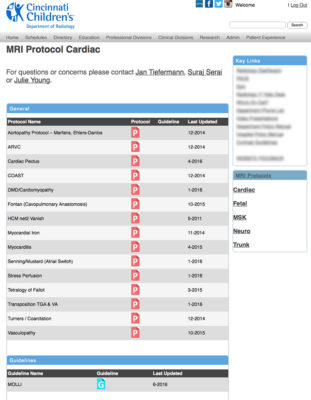 Image: Sample MRI Cardiac Protocol list webpage.
Image: Sample MRI Cardiac Protocol list webpage.
There are many advantages to the online access of protocols. Protocols can be viewed by anyone with access to our radiology website. So not only do the techs have easy access, but so do the radiologists, fellows, and residents who protocol our scans and adjust our guidelines. Teaching aids regarding background information, proper angles, and coverage needed on a particularly rare sequence or study can also be viewed. Vendor-specific terminology has been added to the protocols. This is important considering our department has both GE and Philips MRI scanners.
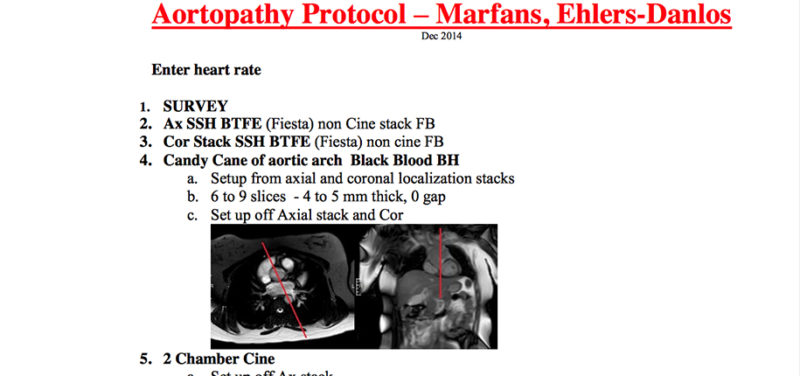
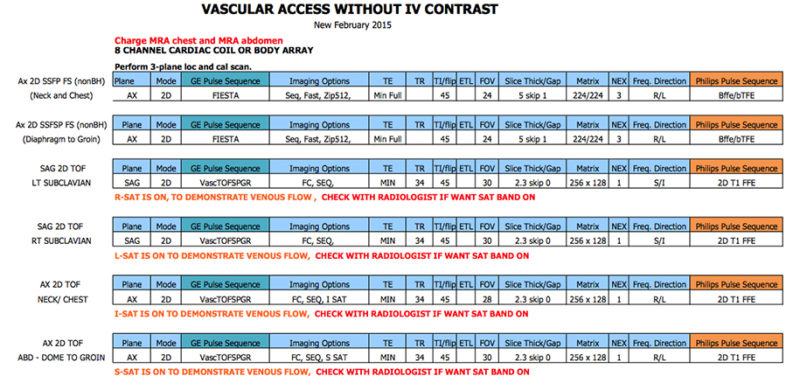 Images: Sample MRI Protocol files.
Images: Sample MRI Protocol files.
Another advantage is the reduction of paper usage. It is cost effective and at the same time helps our department to become “greener.” Hundreds of sheets of paper were required to maintain a protocol binder in each of the seven scanners at the base hospital. Every binder consisted of more than sixty individual protocols and numerous guidelines. Now we are one step closer to being a modern, paperless department!
Contributed by Jan Tiefermann RTr, MR and edited by Tony Dandino, SPEC-MR QUALITY.
